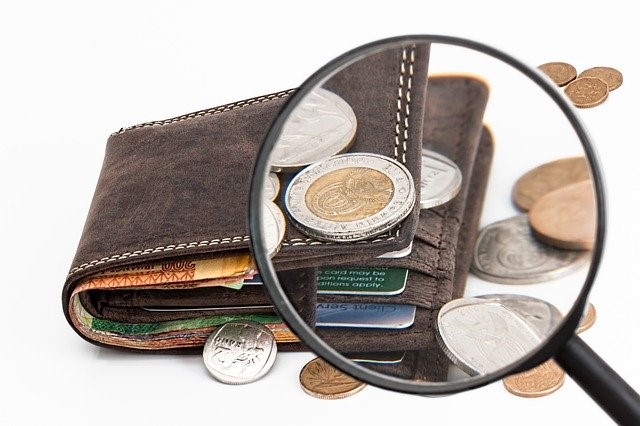Welcome to the no-budget method user guide! This is the fourth budget user guide of five in a 6-week series.
Is it possible to budget without writing one out every month?
I hate tracking my spending on a weekly basis.
Does this method require a lot of tracking?
I am extremely busy and don’t have time to budget.
Will the no-budget method work with my schedule?
This user guide will answer these questions.
You will learn how it works, the pros and cons, systematic instructions, and how to manage this budget effectively.
To make sure I included everything you need to know for this budget method. I tried it for one month.
The pitfalls I found are included here as tips to help with your success.
“Whatever you’re ready for, is ready for you.” – Mark Victor Hansen
– Mark Victor Hansen
If you’re tired of being in debt or not knowing where your money is going.
You are ready for this!

How It Works
This method is exactly how it sounds; you will manage your money without writing a new budget every month or tracking every dollar.
In the beginning, you will need to write out a budget. The reason why you need to know is how much your expenses and income are.
Once you know these two numbers, you can figure out how much to put in your savings account each month.
As well as how much leftover income (something I like to call mad money), is yours to spend any way you choose.
This figure is a consistent amount for each paycheck.
It allows you to spend on non-budgeted items safely without missing a bill payment.
Your mad money is also the key to not creating a written budget each month.

Pros and Cons
Pros
- Don’t need to write out a budget each month
- No spend tracking for regular expenses
- Extremely easy to start and maintain
- Start saving or investing more
- Simpler to manage than most budgets
- Saves a lot of time
- Automatically know your spending limit each month
Cons
- It’s easy to over spend if you take on more monthly expenses (subscriptions, food delivery, new car loan, etc.)
- You can easily forget about yearly expenses
- More difficult to catch fraud in your bank account since you aren’t expense tracking regularly
- If your expenses are more than your income this method will not work
- Debt payoff may take longer since you are not using your mad money to pay bigger chunks
- You may start spending more frivolously
- Easy to miscalculate dollar amounts for utilities and food
- Cannot use credit cards (avoid increasing monthly expenses)
- Bank account total will be unreliable
Since you are not tracking every expense in your budget you will have a tendency to rely on your bank account balance.
However, it is possible not all of your bills have been taken out of that total you see.
Catch Up on the Beginning of the Series:
How to Create a Budget for Beginners
5 Types of Budgets for Beginners
How to Create a Biweekly Budget that Actually Works
Discover 9 Easy Steps to Create Your Cash Envelope System
How to Create a Values-Based Budget Using 5 Easy Steps
Steps to Create Your No-Budget Budget
Set Your Budget Goal
The best way to stay on track with any budget is to set a goal.
Typical goals for beginner budgeters are to stop overspending, save more money, or pay off debt.
This step is the most crucial to make sure your money goes where you want it to.
Locate and Gather Last Month’s Financial Materials
Before getting started on any budget, you will need to know how much you earn and spend.
Gathering your financial materials is the best way to make sure you don’t miss anything.
Below are some suggestions on where to find it all.
- Your free credit report
- All of your bank statements from last month
- Credit card statements from the previous month
- Open all of your mail
To make this step super easy, download the free checklist below. I created it to help you gather all of this information quickly.
It also includes instructions on where to find your free credit report.
This checklist is part of the Budget & Debt Payoff Planner in the Budget Planners Shop.
LOCATE/GATHER YOUR DEBT CHECKLIST
More Articles You May Be Interested In:
How to Save Money on a Tight Budget
What Happens If I Don’t Pay My Credit Card Bill
How a Grocery Price List Can Save You Money
Create your master list of expenses
A master list of everything you owe makes it easier to see the income you have tied up, all in one place.
Include in your master list the next bill due date, monthly payment amount, who you owe, and the total pay off amount for debts.
Once complete add together all of your monthly expenses to find the total number. You will need this number for the calculation step.
As another time-saver, download the “List of Debt Worksheet” below. It is completely set up for you.
This worksheet is also part of the Budget & Debt Payoff Planner in the Budget Planners Shop.
How much do you earn per month
As you are looking through your financial statements make note of the amount of income you earn consistently.
This number will also be used in the next step.

Calculate how much you have leftover (Mad Money)
Subtract your expenses total from your income total. This final number is how much mad money you have each month.
Now, you have two decisions to make. How much will you use for miscellaneous spending (fun money)?
As well as how much will you save, invest, or pay off debt with?
Decide to save/invest/pay off debt each month
For those of you starting to budget, I want you to ignore investing for now.
Do you have any savings?
How much debt do you have?
Focus on putting a portion of your mad money in your savings account until you are comfortable there is enough to cover an emergency.
After that, you can start using what you were saving to pay off your smallest debt.
Once you have paid off a good portion of your debt start focusing on investing options.
What is your final number?
Now, subtract the amount you are saving, investing, or paying off debt with from your mad money.
This is your final number. You can spend this amount any way you like.
If you have leftover mad money at the end of the month, move it to your savings account.
The idea is to keep all of your numbers the same each month, even your mad money.

Tips for the No-Budget Method
Account for Irregular and Yearly Expenses
Irregular expenses are items you may purchase every 90 days such as prescription medications.
Yearly expenses can be vehicle licensing, income taxes, yearly subscriptions, etc.
These can really throw off a budget.
I strongly recommend you review your financial statements for an entire year to compile a list of these expenses.
Write down the amount and the next due date. Refer to this list monthly so you know when it is coming.
Always Take a List to the Store
When you are purchasing household needs or groceries always create a list to take with you.
This will ensure you stay in budget for these items.
If you make a purchase not on your list, subtract it from your mad money.
Keep a Mad Money Tracker
You will not need to keep a regular spend tracker with this budget method.
However, I highly recommend you keep track of your mad money balance.
If you overspend this amount, then you will start spending money meant for your bills.
Do Not Spend Because You Can
Just because you can, does not mean that you should.
Unless there is something you really want or have a fun outing planned save your mad money.
Spending for the sake of spending can create new bad habits.
When I experimented with this budget method, I actually saved my mad money for 3 months.
I was able to buy a brand new laptop in cash.
It felt very liberating!

How to Manage This Budget Method Effectively
Adapt Your Budget
A budget cannot survive without being updated. It will take you at least 90 days to figure out your true budget numbers.
In the beginning, keep reviewing your previous month’s financial statements to see if you are spending what your budget says you should spend.
You may be spending more in some categories and less in others.
For example, if you are spending more on groceries than your budget calculated, change the amount you are spending on your master list of expenses.
Vice versa, if you are spending less in another area, decrease the numbers for that category on your list.
I came across a survey that states 31% of Americans overspend on groceries.
Another 63% used a delivery service once per week increasing their bill to cover fees and tips.
Groceries are a common area to underestimate.
Most budgets fail because someone is trying to adapt their spending habits to the budget instead of adapting the budget to their spending habits.
Keep a Checking Account Buffer
An account buffer is an amount you keep in your checking account to protect it.
If you accidentally overspend or an expense you forgot about clears your account, the buffer will prevent overdraft fees.
I keep a $500 buffer in my checking account at all times.
I do not use this money for anything. It is there for an emergency and a sense of security.
More Articles You May Be Interested In:
How to Save Money on a Tight Budget
What Happens If I Don’t Pay My Credit Card Bill
How a Grocery Price List Can Save You Money
Concluding Thoughts
But what if the no-budget method does not work for my situation? I have you covered.
If this one particular budget does not work for you, then try a different one.
There is one more budget user guide coming your way next week, the Anti-budget.
Below are the first 5 posts in this six-week series along with a basic budget creating user guide.
I encourage you to check them out!
How to Create a Budget for Beginners
5 Types of Budgets for Beginners
How to Create a Biweekly Budget that Actually Works
Discover 9 Easy Steps to Create Your Cash Envelope System
How to Create a Values-Based Budget Using 5 Easy Steps
The first 2 posts go into more detail on basic budgeting regardless of the method you are using, along with a summary of how each of the upcoming budget methods work.
Happy Reading!
References
https://www.lendingtree.com/credit-cards/survey-grocery-shopping-food-buying-pandemic/
Subscribe and you'll receive our weekly posts right in your inbox. You'll also be one of the first to be notified when our free budget course opens. Hope to see you there!





